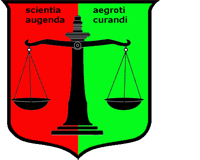IFMA Preventive Health Management Inc.Institute for Medical AdvancementNew York, NY 10005, USA |

|


|
Acute Schizophrenic PatientsBased on a sample of 45 acute-schizophrenic patients and 45 matched controls, we investigated the nonverbal characteristics of schizophrenic speech by means of an "acoustic" speech analysis. Using a multivariate discriminant function, totally 77 (85.6%) individuals of our patient and control sample could be correctly classified by a set of 12 acoustic variables at entry into study. At hospital release the majority of patients (64.4%) still exhibited speech impairment although acute psychopathology had significantly improved. Chronic Schizophrenic PatientsBased on a sample of 42 chronic schizophrenic patients and 42 carefully matched controls, we investigated potential relationships between acoustic variables on the one hand, and negative syndromes, positive syndromes and affective disturbances, on the other. A set of 12 acoustic variables allowed an almost perfect discrimination between schizophrenic patients and normal subjects. Acute side-effects of medication did not explain this finding. However, the extent to which the observed changes in speaking behavior and voice sound characteristics were caused by longterm neuroleptic treatment could not be answered by our investigation. Negative-positive Model of SchizophreniaIn view of a biological validation of the negative-positive model of schizophrenia, discriminant analysis yielded conclusive proof of a close relationship between acoustic variables and the severity of the negative and positive component of schizophrenia. In particular, by means of "objective" acoustic variables and under the constraint of reproducibility, 75.9% of patients were correctly classified as low or high scorers with respect to the negative syndrome, 71.9% of patients with respect to the positive syndrome, and 79.4% of patients with respect to their depressive symptomatology. More to Explore
Stassen HH, Bachmann S, Bridler R, Cattapan K, Herzig D, Schneeberger A, Seifritz E:
Detailing the Effects of Polypharmacy in Psychiatry: Longitudinal Study of 320 Patients
Hospitalized for Depression or Schizophrenia. Arch Psychiatry Clin Neurosci. 2022; 272(4): 603-619
[get the article]
Stassen HH, Bachmann S, Bridler R, Cattapan K, Herzig D, Schneeberger A, Seifritz E.
Inflammatory Processes linked to Major Depression and Schizophrenic Disorders and the
Effects of Polypharmacy in Psychiatry: Evidence from a longitudinal Study of 279 Patients
under Therapy. Eur Arch Psychiatry Clin Neurosci. 2021; 271(3): 507-520
[get the article]
Braun S, Bridler R, Müller N, Schwarz MJ, Seifritz E, Weisbrod M, Zgraggen A, Stassen HH:
Inflammatory Processes and Schizophrenia: Two Independent Lines of Evidence from a Study
of Twins Discordant and Concordant for Schizophrenic Disorders. Eur Arch Psychiatry Clin
Neurosci 2017; 267: 377-389
Püschel J, Stassen HH, Bomben G, Scharfetter C, Hell D: Speaking behavior and voice sound
characteristics in acute schizophrenia. J Psychiat Research 1998; 32: 89-97
Stassen HH, Albers M, Püschel J, Scharfetter C, Tewesmeier M, Woggon B: Speaking behavior
and voice sound characteristics associated with negative schizophrenia. J Psychiat
Research 1995; 29,4: 277-296
|
|

Differences in mean energy per second as a function of experimental conditions: (1) counting/freehand speech [text1], (2) reading out loud emotionally neutral text [text2], and reading out loud emotionally stimulating text [text3]. When counting or producing freehand speech, subjects tend to speak in a somewhat louder voice compared to reading out loud. The differences between the experimental conditions are smaller in healthy volunteers than the differences between "affected" and "recovered" in depressive or psychotic patients. |
|
| [ Mail to Webmaster ] k454910@ifma-health.com |